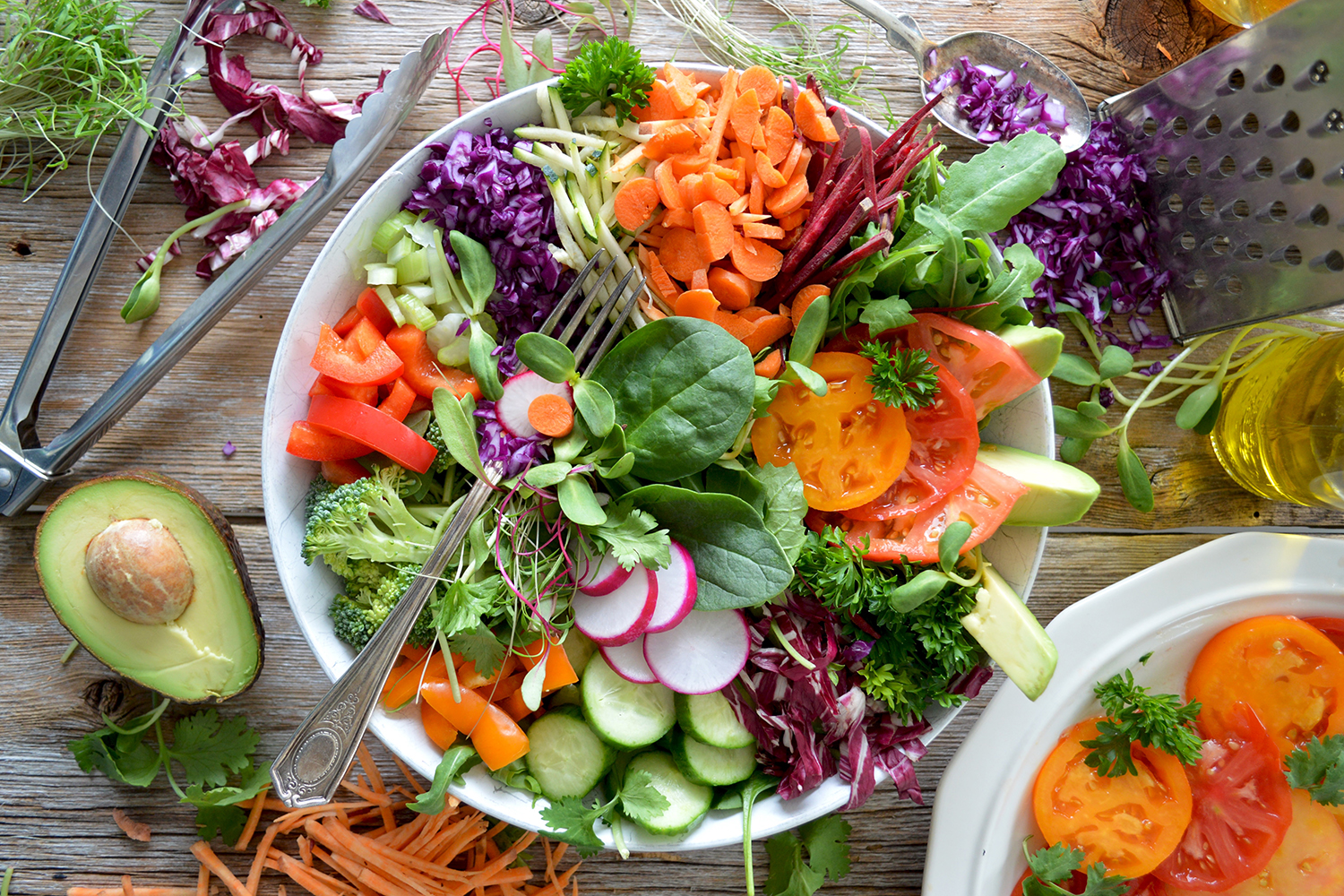
by hello@healthfullyheather.com | Feb 18, 2020 | Healthy Living, Nutrition 101
Vegetables are pretty much the only part of our diet that have never really come under question from a nutritional standpoint. Everyone more or less unanimously agrees that they are an essential part of a healthy diet.
Veggies are an amazing source of essential vitamins and minerals, are a great source of fiber which is important for our digestive health, and also contain a variety of phytonutrients that contain anti-inflammatory, antioxidant, and other disease fighting properties.
Vitamins & Minerals
While many of the vitamins & minerals you find in veggies can also be obtained elsewhere, there is no other source that offers such bang for your buck. That is to say, you get an incredible number of these vitamins and minerals for a relatively low amount of calories. In fact this is one of the most trickiest combinations to create with today’s modern diet – getting the required amounts of vitamins and minerals into your diet without over consuming the number of calories your body requires. If you’re not eating enough veggies, then the chance is high that you aren’t hitting the requirements your body needs.
Our body relies on vitamins and minerals for a whole variety of different functions, from energy production to our nervous system and immune system, and we need to obtain them from our food. Not all vitamins and minerals can be stored by the body, which is why it’s important to be consistently consuming vegetables to keep our needs met.
The main vitamins and minerals you’ll receive from vegetables are: vitamin A (as its precursor, beta-carotene), vitamin C, the B vitamins (except B12), vitamin K, calcium, chromium, copper, magnesium, manganese, potassium, and sulphur.
Phytonutrients
Phytonutrients can only be found by consuming plants, and these compounds are what give fruits and veggies their vibrant colours. By figuratively “eating the rainbow” when it comes to veggies, you’re ensuring you get a wide variety of these health protecting nutrients!
So far there have been more than 5000 phytonutrients identified, but scientists are still working to figure out exactly what role they play in our health. What has been seen already is that individual phytonutrients themselves don’t have such a strong effect on our body, but multiple in unison do, as it occurs in nature, which is why it’s much more important to eat vegetables in their whole form rather than using supplements.
Phytonutrients aren’t considered essential, unlike vitamins and minerals, but their health protecting abilities make them an important component of our diet. They have antioxidant and antimicrobial properties, help reduce inflammation, protect our immune system, help prevent chronic diseases, and reduce the risk of cardiovascular disease.
A wide variety of vegetables across different vegetable families is also important, as phytonutrients within families tend to be fairly similar. Research has shown that a wide variety of many different phytonutrients is more important that a large quantity of only a few.
Fiber
Vegetables and other plant-based foods are our bodies’ main source of fiber. Having sufficient fiber in your diet is essential for ensuring your digestive system health. It makes sure everything keeps moving through our system, provides a source of nutrition for the beneficial bacteria in our gut, and stimulates the growth and maintenance of these beneficial bacteria. Different types of fiber feed different types of bacteria, so again variety is the name of the game.
Read more about the importance of fiber here.
So how many veggies do you actually need to eat?
Recommendations can vary from country to country base on their individual nutrition guidelines. Many recommendations now focus on a plate-based approach, which generally means ensuring that at least 50% of your plate is made up of vegetables.
Generally the guidelines suggest around 5-8 servings per day of fruit and vegetables, even up to 10 (with a strong emphasis on vegetables). One serving is roughly ½ cup of cooked veggies or around 80-90 grams. Raw leafy greens would be 2 cups for one serving.
Ready to boost your vegetable consumption?
Join the free 5 day challenge to kick start your new habit!

by hello@healthfullyheather.com | Jul 9, 2019 | Nutrition 101
While I practice nutrition by training, I’m all about a holistic approach. That means I like to look at all aspects of life and how they come to together to create optimal health!
To keep things as simple as possible I’ve broken it down into the 5 key foundations of health, split into nutrition – the layer that everything is supported by – and lifestyle.
While we’re looking at each aspect separately, it’s really how they all come together that determines how good (or not) we feel.

Foundation One – Nutrition
While there are so many different ways we can categorize nutrition, I’ve split this up almost along the macronutrient lines. Carbs, fat, protein, and water are our macronutrients (and if you click on any of those labels you’ll go straight to a blog article going into each more in depth!).
But I just had to split out veggies and give it its own spotlight because they are so. darn. important! They are packed with vital vitamins, minerals, and often antioxidants, and because of this I also consider them our best source of fiber.
Nutrition really underpins our health which is why I have it as the bottom layer of the pyramid. The majority of our immune system is in our gut and a lot of the neurotransmitter serotonin is also produced there (the happy chemical for our brains!). What we eat affects our energy levels and allows our body to build and maintain healthy tissues.
Honestly, I could go on and on about how important nutrition is! But I’m hoping since you’re here with me you already recognize this. 😉 For me, food is about nutrient density – eating the things that are packed full of the most nutrition possible. This comes before food for fuel or calorie counting.

Photo by Lauren Kay on Unsplash
Foundation Two – Sleep
Sleep is absolutely vital to ensuring our body is able to rest and recover from the activities of our day. Lack of sleep has been linked to overeating as well as increasing our likelihood of making poor food choices (since you’re so tired and just craving easy energy!). Sleep loss can increase your risk of insulin resistance and can wreak havoc on your hormone levels. It’s fundamental for the health of our brain and immune system.
Sleep loss does accumulate night after night, and if you aren’t sleeping enough during the week it’s highly likely that having a lie-in on weekends isn’t completely getting you out of the red. Plus just one night of poor sleep can already profoundly affect our energy levels and needs the next day.
Remember that adults tend to need 7-9 hours of sleep every night. Sleeping less than 6 hours a night increases your risk of all-cause mortality by 12%. To find out what your body needs try to head to bed at the same time every night for at least a week and wake without an alarm clock. After a few days (once you’ve recovered from any deficit you may have been in) you should naturally find your body’s set point.

Photo by Sylwia Bartyzel on Unsplash
Foundation Three – Connection
It made headlines in 2018 when the UK created the position of “minister of loneliness”. She’s been tasked with working on bringing down the rates of loneliness across all generations, and a lot of other countries have taken note.
The permeation of the internet and social media into our lives has on one hand brought an increase in social connections – for example I can now easy stay up-to-date with my family back in Canada! But on the other hand, it can result in us becoming even more isolated. Sometimes social media can feel social – but often we aren’t making genuine connections and most of us are taking on the role of observer.
Even for this introvert it can sometimes feel easier to hole up alone and avoid “peopling”! But even introverts shouldn’t forget how important these interactions are. While they may cost energy, they fill you up in a different way!
Having genuine connections with others is a key component for our mental health which is more connected to our physical health than we often think. And this can come in a variety of ways – for example, family, friends, pets, colleagues, or community groups. Connection can also include a closeness with nature – getting outside, breathing fresh air, and surrounding ourselves at least occasionally with greenery.

Photo by Roberto Nickson on Unsplash
Foundation Four – Self-Care
Self-care or stress management tends to be an area we easily overlook. It doesn’t need to be yoga, journaling, or a rose petal filled bath, but just something that allows you to relax, breathe, and recharge yourself. This could be a walk out in nature, a movie night with your partner, even a solo trip to the grocery store!
Stress can manifest in so many different ways, that taking care to try and reduce or recover from this is incredibly important. Stress can affect our digestion, our hormones, our sleep, our relationships! You can be doing everything else right, but if your stress levels are too high you could be undoing all the positive work.
“You can’t pour from an empty cup.”

Photo by bruce mars on Unsplash
Foundation Five – Movement
There has definitely never been another era in human existence where we have been so sedentary! I don’t think you can confute that movement is necessary for our health.
However, I have called this foundation movement rather than exercise. This is partly a mental word play, since we tend to have negative associations with the word exercise – like some we have to do that we’d rather not! Movement sounds more joyful – keeping your body active in a way that feels good and creates a sustainable, healthy habit.
Movement improves our health through a multitude of ways, such as boosting our immune system, improving our resistance to stress, and helping to regulate our circadian rhythm (our sleep-awake cycle).
Do these five foundations ring true for you? Perhaps there is one or more you feel you are struggling with? That’s totally normal and is a balancing act that we are all working on.
If you’re looking for more support on any of the five foundations, head over here to learn more about working with me one-on-one!
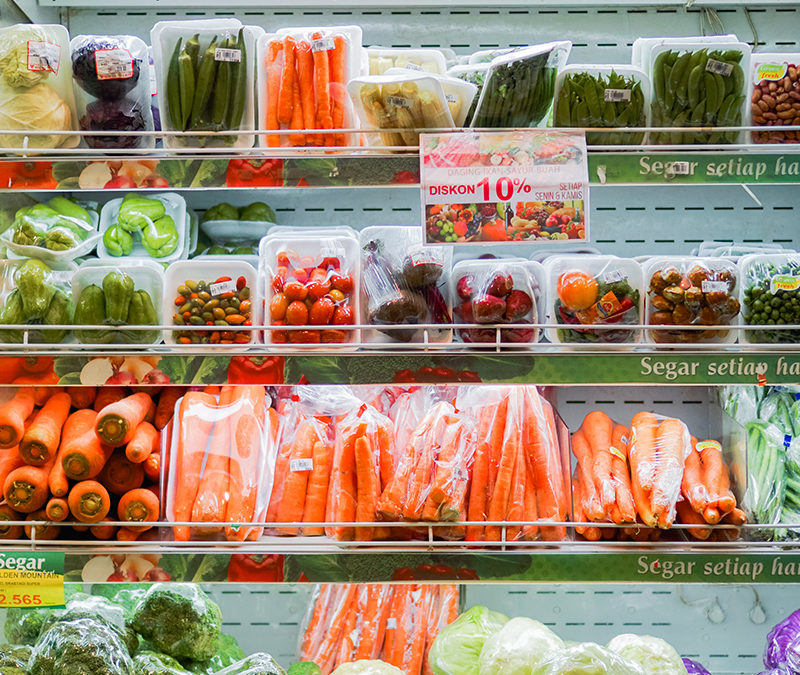
by hello@healthfullyheather.com | May 10, 2019 | Healthy Living, Nutrition 101
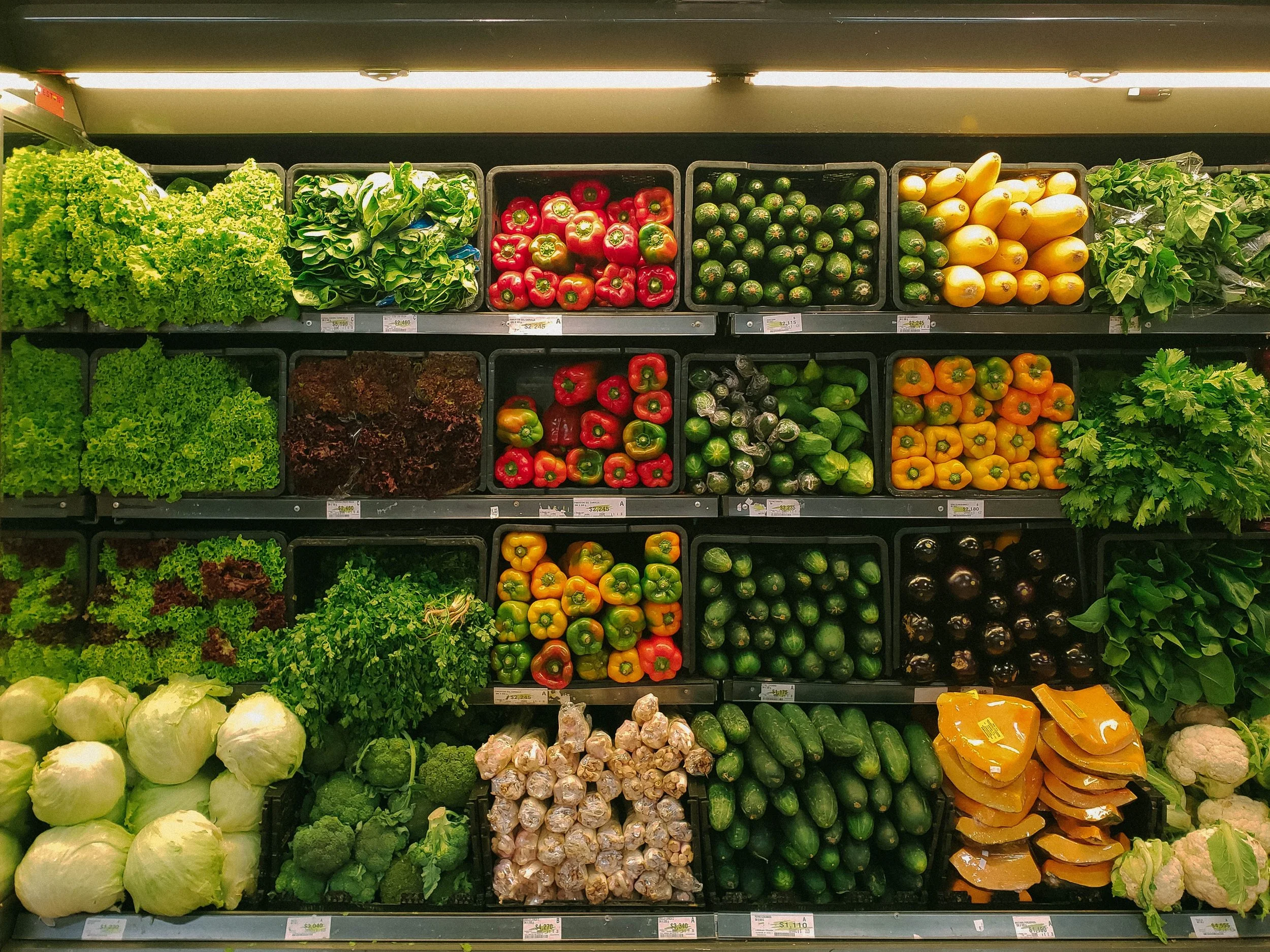
Photo by nrd on Unsplash
The amount of money that people spend on food has changed pretty dramatically over the last decades. In the US in the 1900s, families spent on average around 40% of their total budget on food. By the 1950s that had fallen to 30%, and the consumer expenditure report from 2018 reports that the average household is now spending just 10% on food. Of that, 56% is for food at home, and 44% is away from home. (1)
In 2017 in the EU it was reported that the average spend on food plus non-alcoholic beverages was 12.2% of a household’s budget (ranging from 27.8% in Romania to just 8.2% in the UK). (2)
For context, the OECD reports that between 2014 and 2018 household disposable income has increase per year on average in the EU by 1.15% and in the Unites States by 1.63%. (3)
The quality of the food we eat can have a significant impact on our health over time, so it’s possible that such a small emphasis in the budget could be problematic. Especially when taking into account potential future healthcare-related costs.
Unfortunately, it often seems to be the case that the less nutrient-dense foods tend to be cheaper than healthier alternatives, which can cause confusion in making the best choice.
If it’s not possible for you to increase your food spending, but you still want to eat as healthfully as possible, I have a few key tips for you:
Think about good/better/best when it comes to meat and dairy
Fish & Seafood
Having at least one serving of an oily fish (think salmon, sardines, anchovies, herring, or mackerel) per week tends to be one of my first nutritional recommendations due to the incredibly important and healthy Omega-3 fats that they contain. If one portion of these fresh, wild-caught fish isn’t possible on your budget, look for the same but as a tinned version. Just make sure it’s tinned in just water or olive oil (optionally some herbs or spices) but without any preservatives. All the above-mentioned fatty fish are great options as are oysters.
Red meat
The best sources of red meat would be grass-fed (or pastured if you are talking about pork), followed by grass-fed but grain-finished. If these are out of the budget, then opt for cuts of meat that are low-fat, (like lean ground meat) as the fat tissue is where animals store their nutrients but also their toxins. Think about splurging occasionally on one of the higher quality sources.
Dairy
Raw and full-fat forms are by far the best if you know and trust the source. If you can’t access raw dairy, swap out the skim or low-fat version for the full-fat to ensure you’re getting the maximum nutrient density. This is true not only for milk, but also for other dairy products as well like yogurts or cheeses. Just remember that if you’re frequently drinking glasses of milk, the swap to higher fat versions do come along with the extra calories, so you will need to adjust your diet accordingly.
Poultry
Look for pastured chicken, just like you would pork. If you can’t swing that, then just like with red meat stick to the low-fat cuts like the chicken breast. Just make sure you’re bringing fat onto your plate in other ways! It’s always cheaper to buy the whole chicken at once and then you have your protein sorted for multiple meals at once!
Eggs
Eggs are tricky ones as there are so many different classifications involved. If you can’t get yours straight from a farmer (or your own chickens!), look for certified organic. This means that they were raised free-range: they can move about freely inside the barn they are being raised in, which is “free-run”, but on top of this they also have access to outdoor runs. (However, that is only when weather permits and possibly through a small door that they may not even use!) You can also find Omega-3 and vitamin fortified eggs, but the organic, free-range are still your best option, followed by free-run.
In general, if you struggle to budget for quality meats and dairy, it can often be better to eat less of them rather than purchase the cheaper versions. These animals are usually raised in ways that are a burden to the environment and due to their non-native diet tend to have an inflammatory balance of Omega-3 to Omega-6 fats.

Photo by NeONBRAND on Unsplash
Buy frozen or canned vegetables
Don’t be afraid of buying your produce in the frozen section! Often the prices will be cheaper, and these fruits and vegetables are usually flash frozen shortly after being picked – which means they can actually be more nutritious than their “fresh” counterparts that have been sitting in transportation and in the store for days or even weeks. You can cook them up with your main meal, or even toss them frozen into a smoothie!
Canned veggies can also be a great staple to stock your pantry with and can come in handy if you’ve used up your fresh produce and want something to stretch the budget a bit longer before you go shopping. But just like with tinned seafood, make sure there aren’t a whole host of preservatives in there – look for just water and perhaps some salt. Legumes are a great one to stock here.
Buy in bulk
Keep an eye out for discounts and stock up when you can! I’ve definitely been that person who clears out the stock of almond milk when they’re on offer. But there are also more and more stores that offer bulk sections where you can purchase things like nuts, seeds, flours, grains, pasta, etc. in bulk, and often in your own containers as well. Usually these sections tend to be lower priced than the pre-packaged counterparts.
This can also translate to meat as well. Buying a whole chicken can work out cheaper by weight than individual cuts. If you can purchase a cow-share from a local farmer, you’ll also have a lower price than the same quality of meat from the shop.
Eat in season
Fresh, in-season produce is almost always going to be cheaper than when it is out of season. So think about rotating the types of fruit and vegetables you eat throughout the year depending what is in season. You might even discover some new varieties you’ve never tried before! You can head over here to download my free printable lists of what is in season when.
Meal planning & batch cooking
This is probably my favourite tip – I love meal planning and batch cooking for just making life easier in general! Planning out your food for the week in advance helps ensure that you only buy what is needed and don’t have to throw money away in spoiled food at the end of the week. It helps cut down on mid-week impulse shopping since you know exactly what you’re having and have elements ready to go at home. If you’re on a really tight budget, you can even price out your shopping list to ensure you can get everything you need.
Cooking bigger batches to have the next day as leftovers (my favourite thing to do for lunch) or to freeze for later can help your budget for that week or later down the line if you find yourself stuck for what to eat. Reheat and go!
Track your spending
If you don’t already, it can be helpful to track your spending for at least a week or two to get a baseline idea of your food purchase habits. Take into account both what you buy to eat at home, but also what you’re eating out – including coffees and other drinks! Being aware and totally honest with ourselves is the first step to getting a budget on track if you feel like you’re struggling. Then you can identify areas for improvement where you might be able to create some extra wiggle room.
I hope these ideas provide some good inspiration for you in terms of how to make your grocery budget stretch further and what to prioritize! We are what we eat, so it’s important to try and do the best we can with the resources that we have at the moment. At the same time, don’t stress about the areas where you might need make compromises; just take it one step at a time.
Sources:
(1) https://www.valuepenguin.com/how-much-we-spend-food
(2) https://ec.europa.eu/eurostat/web/products-eurostat-news/-/DDN-20181204-1
(3) OECD (2019), Household disposable income (indicator). doi: 10.1787/dd50eddd-en. https://data.oecd.org/hha/household-disposable-income.htm (Accessed on 10 May 2019).
by hello@healthfullyheather.com | Mar 28, 2019 | Healthy Living, Nutrition 101
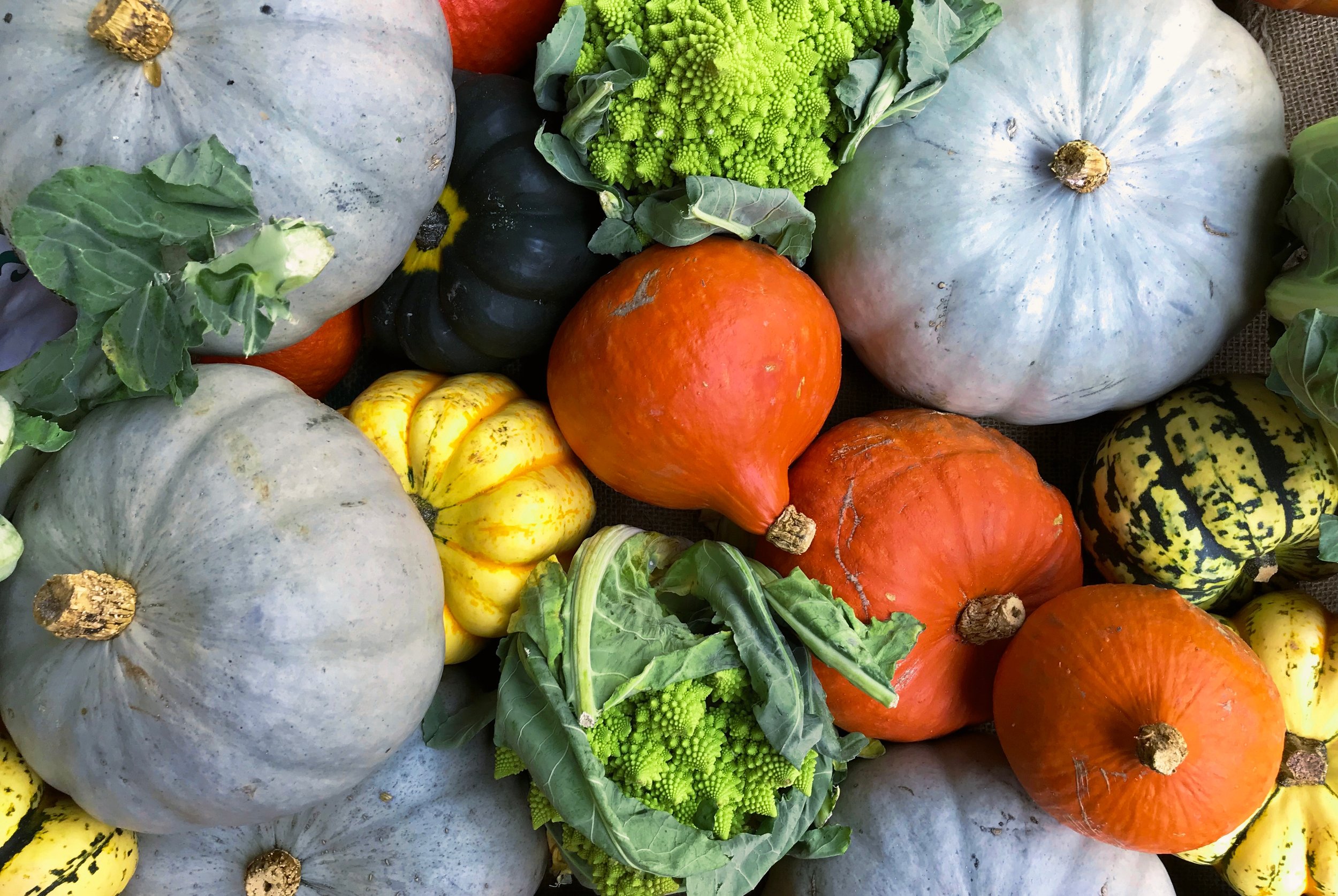
Photo by Blair Fraser on Unsplash
After the last posts you’ve cleaned out your kitchen and restocked your pantry with all the healthy essentials! But you want to get the most out of your money and make sure all those delicious goodies last as long as possible. (Missed those posts? Check them out here and here.)
In this post we will go through how to wash and store your produce as well as optimal storage for nuts, seeds, and other healthy fats.
A Quick Note on Organic versus Conventional
In terms of health benefits, there have been studies done that show organic produce tends to be more nutrient dense than conventional.
However, the nutrient content in produce can vary greatly based on where and how it is being grown, the nutrients available in the soil, and that doesn’t even take into account conventional versus organic.
While overall it is fair to say that buying organic is better for our bodies and the environment than conventional, sometimes it’s not possible either for accessibility or budget reasons. But there is a great way to decide what produce should get priority over others.
The Environmental Working Group out of the United States has just released their 2019 round-up of the most and least pesticide contaminated produce. Their “Clean Fifteen” is the least contaminated produce which you should be OK buying conventionally. The “Dirty Dozen” is the produce with the most pesticides that you should try to buy organic as much as possible. (1)
The 2019 “Dirty Dozen” is:
-
Strawberries
-
Spinach
-
Kale
-
Nectarines
-
Apples
-
Grapes
-
Peaches
-
Cherries
-
Pears
-
Tomatoes
-
Celery
-
Potatoes
And the 2019 “Clean Fifteen” is:
-
Avocados
-
Sweet corn
-
Pineapples
-
Frozen sweet peas
-
Onions
-
Papayas
-
Eggplants
-
Asparagus
-
Kiwis
-
Cabbages
-
Cauliflower
-
Cantaloupes
-
Broccoli
-
Mushrooms
-
Honeydew melons

Photo by NeONBRAND on Unsplash
Cleaning and Storing Fruits & Vegetables
Properly cleaning your fruits and veggies is so important – not just because of pesticides, but also due to the possibility of bacteria and food-borne illnesses. Pesticides can be found even in small amount on organic produce (not all pesticides are banned in organic farming). And bacterial contamination can occur in a variety of ways, like during the growing season by animals or contaminated soil or water, or by poor hygiene by the workers harvesting the produce. The food can also become contaminated from the many hands it passes through during processing, during your own food preparation, or improper storage. (2)
That all being said, it’s cleaning your produce is pretty straight forward and easy to incorporate into your meal prep!
General Storing & Cleaning for Produce (exceptions below):
Wash just before consuming in a large bowl of cool water with 1 teaspoon (5mL) of baking soda dissolved. Use your hands or a brush to ensure all dirt is removed from the produce. Rinse and pat dry.
Most fruit and vegetables can be stored in the fridge, ideally in the designated crisper drawer. However, some are OK in a cool, dry space that is well ventilated.
In a cool, dry spot:
-
Bananas
-
Pineapple
-
Potatoes
-
Onions
-
Garlic
-
Mushrooms
-
Eggplant (but use within a couple days after purchase)
-
Hard-skinned squash (like pumpkin, butternut, etc.)
In a cool, dry spot until ripe then move to fridge:
-
Tomatoes
-
Citrus
-
Avocados
-
Mangos
-
Plums
-
Peaches
-
Pears
-
Melons
Leafy Greens
Wash these before storing. Fill up the sink with cool water with a teaspoon (5mL) of baking soda. Add in the greens and submerge, mixing gently (did you know that you can “bruise” lettuce?).
Let soak for several minutes before turning into the basket of a salad spinner. Rinse gently before spinning. Be sure not to overfill the spinner otherwise the leaves will not dry properly. If you don’t have a spinner lay the leaves out over dry dishcloths and pat to dry.
Store in the fridge in a dry and clean plastic bag or container with one or two paper towels layered in between to soak up additional moisture.
Celery & Carrots
Can be washed & chopped before storage or just before eating. Wash following the general process.
If storing before washing, just place as is in the crisper drawer of the fridge.
If storing after washing, (peel carrots if desired), chop into sticks. Store upright in the fridge in a container filled halfway with water. Will last less time like this than if stored whole, unwashed (but much more convenient to grab and go as a snack!). Around 3-4 days in the fridge.
Berries
Store in the fridge and only wash just before use (otherwise they will go off quite quickly).
Rinse gently in cold water using a mesh strainer or colander. Pat dry.
Asparagus
Store in the fridge with the bottoms wrapped in a damp paper towel or standing upright in a glass of cold water.
Wash following the general process before consuming.
Mushrooms
Store in a cool, dry spot or the fridge and clean before use only.
Scrub gently using a mushroom brush or a slightly damp towel. Mushrooms easily absorb moisture so avoid using too much water in the cleaning process.
(3)(4)
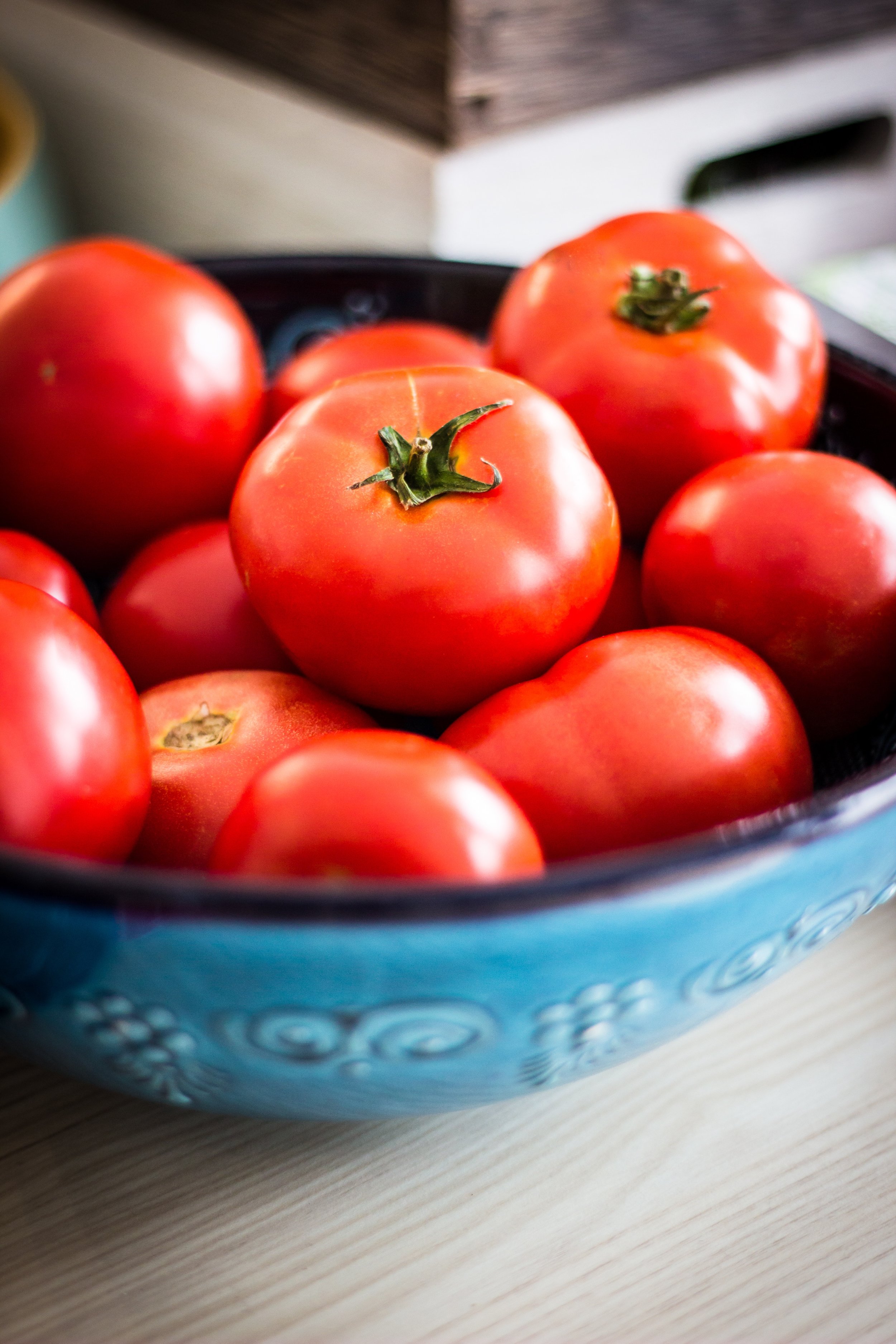
Photo by Deniz Altindas on Unsplash
Storing Fats & Oils
-
Butter: smaller portions for use over the following few days can be stored at room temperature (covered or away from light), but the bulk of it should be refrigerated for the long term
-
Ghee: unopened jars can be stored in a cool, dark cupboard. Once opened they can last for around 3 months at room temperature (in a cupboard rather than out in the open), or up to a year in the fridge. You can easily store it in the fridge like butter, taking out smaller portions for the upcoming days or week.
-
Avocado & Olive oil: always be sure that it is in a dark glass or opaque bottle to protect from oxidization from light exposure. Store in a cool, dark cupboard.
-
Animal fats (like tallow, lard, duck fat, etc.): store in the fridge
-
Nut & seed oil: always be sure that they are stored in an opaque bottle and store in the fridge.
Storing Nuts & Seeds
Nuts and seeds once they are out of their shell have a shelf life of maximum a few months at room temperature; due to their generally high share of polyunsaturated fats they can go rancid fairly easily.
Don’t store them out in the open, but rather in a closed, and ideally cool, cupboard. The best is to store them in the fridge or freezer which will help them last for up to a year or more!
Once the nuts or seeds have been ground, they absolutely should be stored in the fridge or freezer, and if you have butters or oils they should be kept in the fridge.
(1) https://www.ewg.org/foodnews/summary.php
(2) https://www.fda.gov/ForConsumers/ConsumerUpdates/ucm256215.htm
(3) https://foodrevolution.org/blog/how-to-wash-vegetables-fruits/
(4) http://www.halfyourplate.ca/fruits-and-veggies/store-fruits-veggies/
by hello@healthfullyheather.com | Mar 14, 2019 | Healthy Living, Nutrition 101, Recipes

Photo by Aaron Huber on Unsplash
So you’ve successfully cleaned out your pantry! Maybe it’s looking a little bit empty now? Not to worry, there are plenty of healthful foods I can recommend to stock it up!
Of course, this isn’t everything I keep in my kitchen, but the real basics that I think everyone can benefit from having around to make healthy eating as easy as possible.
Healthy fats / oils
During your clean-out you should have gotten rid of any junky fats and oils that are best not to be consumed. Some of the staple, healthy alternatives you should stock instead are:
Nuts & Seeds
Having some different nuts and seeds in the cupboard is perfect for an easy snack or as a topping for sweet or savory dishes! Plus, the nut or seed butters from these sources are great in smoothies or spread on some apple or banana pieces for a delicious snack! Here are some basic suggestions to stock up on, I would suggest picking a couple types of nuts and a couple types of seeds to get you started.
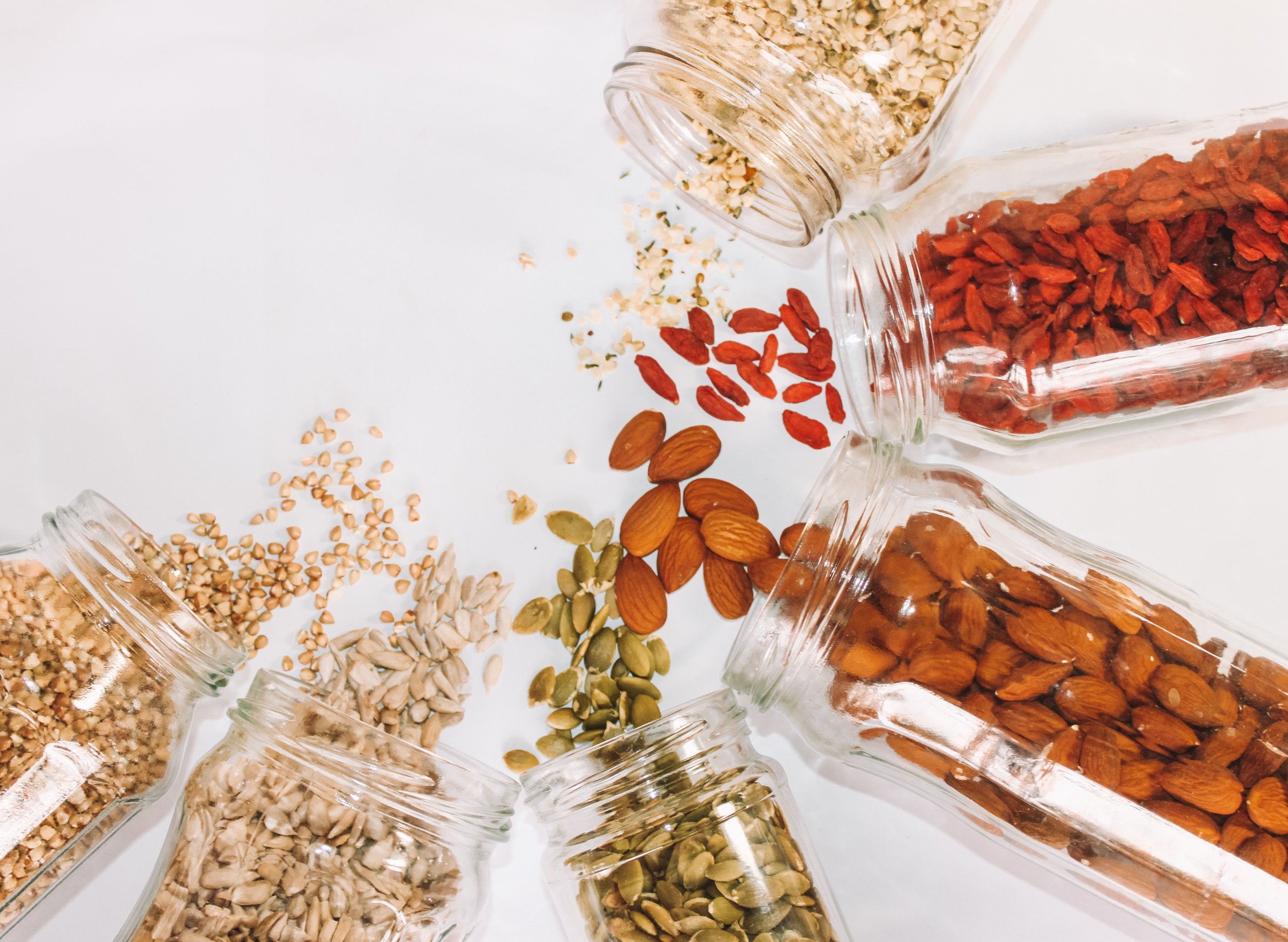
Photo by Maddi Bazzocco on Unsplash
Sweeteners
A lot of “healthier” versions of sweet treats will use natural sweeteners in the place of traditional white or brown sugar. Just remember that it’s all still sugar so keep moderation in mind!
Grains & Legumes/Lentils
These aren’t articles I personally consume too often, but they are in general great items to have on stock for those days you accidentally find yourself with an empty fridge!
Condiments
Take care when purchasing ready-made condiments as many will contain additives, sugar, and/or junky fats. If you can, try and make them at home yourself! For many things, I tend to use a full-fat Greek yogurt as a mayonnaise replacement; it’s just as delicious and so easy! (Check out this curry yogurt dipping sauce.) These are items I would recommend stocking to make creating your own dressings as easy as possible:
-
Apple cider vinegar (try to find one with the mother in the bottle)
-
Balsamic vinegar (mix with olive oil for an easy salad dressing)
-
Coconut aminos (a soy sauce alternative, or else a low-sodium, gluten-free soy sauce)
-
Dijon mustard
-
Greek full-fat yogurt
-
Mustard
-
Tahini (seed butter made from sesame seeds)
Fermented foods
These guys are so important for feeding those incredible gut bacteria! Try and have a serving of some sort of fermented food once a day (if you’re feeling digestive discomfort afterwards definitely scale back and get in touch with a nutrition professional). Pick one or two from this list to try out and alternate sources occasionally.
-
Full-fat yogurt
-
Kefir
-
Kimchi
-
Kombucha
-
Miso
-
Pickles
-
Sauerkraut
-
Tempeh

Photo by Calum Lewis on Unsplash
Spices & herbs
There are so many different spices and herbs you could choose to stock, and probably you already have some of these in your cupboard. These guys are what can really make food exciting and completely elevate your dish. Here are some common ones to give you inspiration when stocking up:
Other staples
-
Canned fish (anchovies, sardines, salmon, tuna) – make sure they are canned in water or olive oil without additives
-
Canned or frozen vegetables – check the ingredients for any additives
-
Non-dairy milks – coconut & almond are my favourites, again check the ingredients list
That’s it for my pantry staples! Hopefully this list will give you a good start on getting stocked up and ready for easy, healthy eating.
by hello@healthfullyheather.com | Mar 7, 2019 | Healthy Living, Nutrition 101, Recipes

Photo by Toa Heftiba on Unsplash
One of the keys to successfully maintaining a healthy diet and lifestyle is to plan and be prepared. It’s a lot easier to eat healthfully if your kitchen is only stocked with healthy, nourishing foods! In this new series, I’ll be covering tips and tricks in the kitchen to not only help you clean out your pantry and restock your kitchen, but how to store different foods, keep grocery costs in check, and cut down on waste!
Planning the clean-out
Naturally, the first step is cleaning out the cupboards! However, before you get started, think about the type of clean-out you are going to do. Who is in your household? If it’s just you, then you’ve got it easy! But if you live with others, like a partner or children, will they be making these changes alongside you, or do you need to keep some of these food products for them? If you need to keep some things for them, then consider where in the kitchen you can store these foods separately from the others.
What to do with the purged products
There’s a difference between the foods you should be absolutely getting rid of and the foods that might not be ideal but you’d like to have occasionally in moderation.
If you’re getting rid of it completely, and it’s not expired, think about either donating it to a food bank, or perhaps gifting it to someone who still eats those products. If it needs to go in the bin, just make sure you’re cleaning out containers and recycling or even composting whatever is possible! (And remember that fats / oils should not be going down the sink.)
For foods that you would like to keep around for occasional consumption, think about storing them in a less convenient place in the kitchen. If you don’t see them as frequently, or it’s not as easy to access them, it could help you with moderation.
It’s important to self-reflect on these items before deciding what to keep. Are you able to moderate certain foods, or is it maybe easier for you to abstain entirely? Habits expert Gretchin Rubin discussed in her book, Better than Before, that some people lean more towards moderation and others towards abstaining – and it can be different depending on what it is that you are talking about.
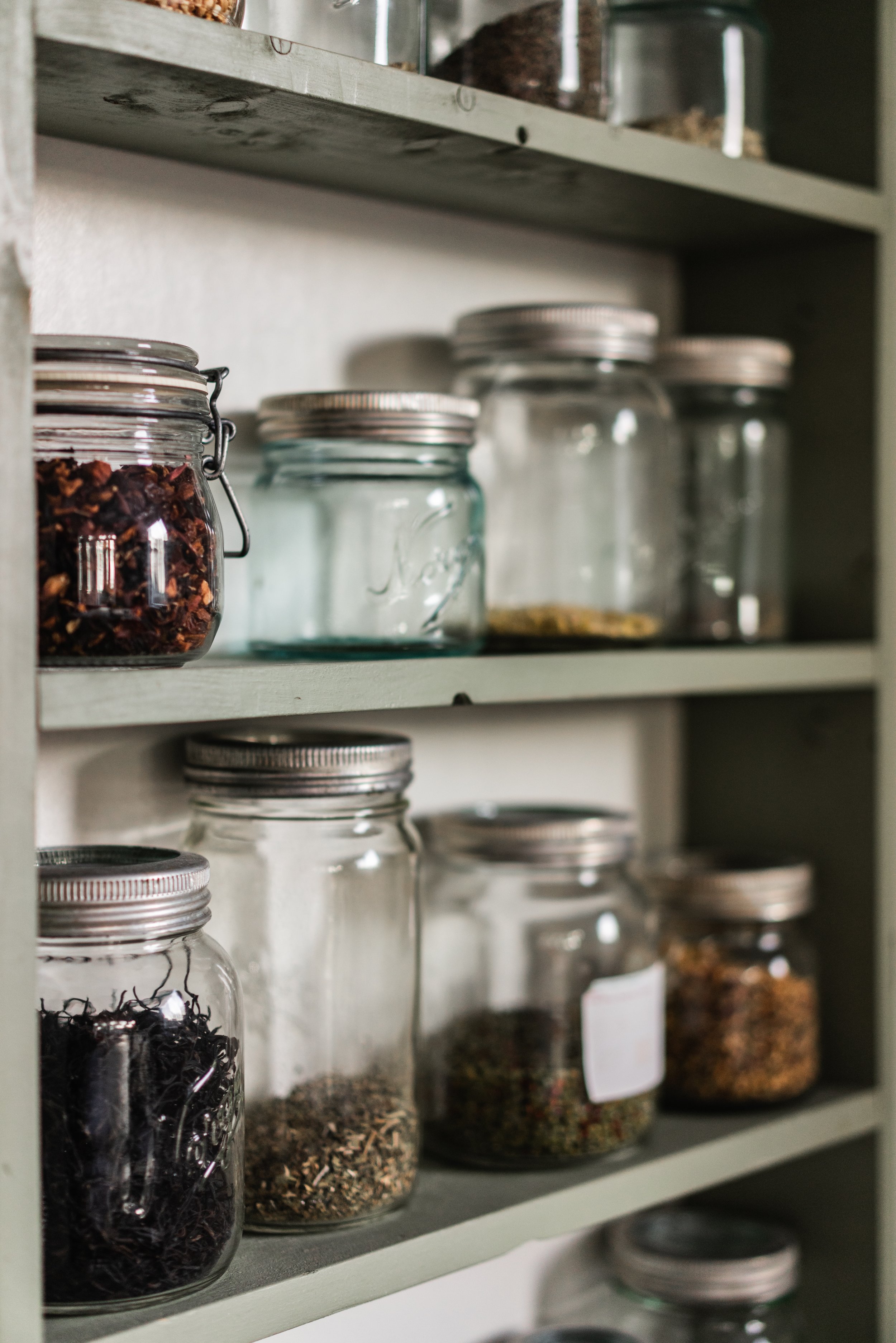
Photo by Ehud Neuhaus on Unsplash
The clean-out
1. Check expiration dates for both perishables and non-perishables and ditch everything that’s gone over.
2. Check the ingredients lists
Look for added sugars, preservatives, or junky fats that are all best avoided. It’s your call whether to keep or purge, but for a product you use often it’s probably best to ditch it and find a better solution. (Check out this blog post to read more on healthy vs. junky fats.) Google additives that you don’t recognize to see exactly what they are – expand your food IQ!
3. Get rid of any processed vegetable oils
This means oils like corn, soybean, canola / rapeseed, sunflower, safflower, cottonseed, grapeseed, palm kernel oil, and peanut oil, along with the very imprecisely name “vegetable oil”. If you have any butter substitutes that are made with these oils you should also ditch them as well. (Check out this blog post to read more on healthy vs. junky fats.)
4. Check your nuts & seeds
Nuts & seeds contain fats that are quite delicate and can spoil fairly easily. In general, we tend to keep these ingredients around longer than we should, so if something has been gathering dust in the cupboard then now is the time to toss it.
5. Check your spice cupboard
Spices & herbs can also expire and go off. Take a look at any expiration dates and give them a shake to see if they haven’t clumped up from moisture. Check any blends to be sure that the only ingredients are spices and herbs and not added preservatives.
That’s it for your kitchen clean up! Next up will be stocking your pantry with all the essentials.

